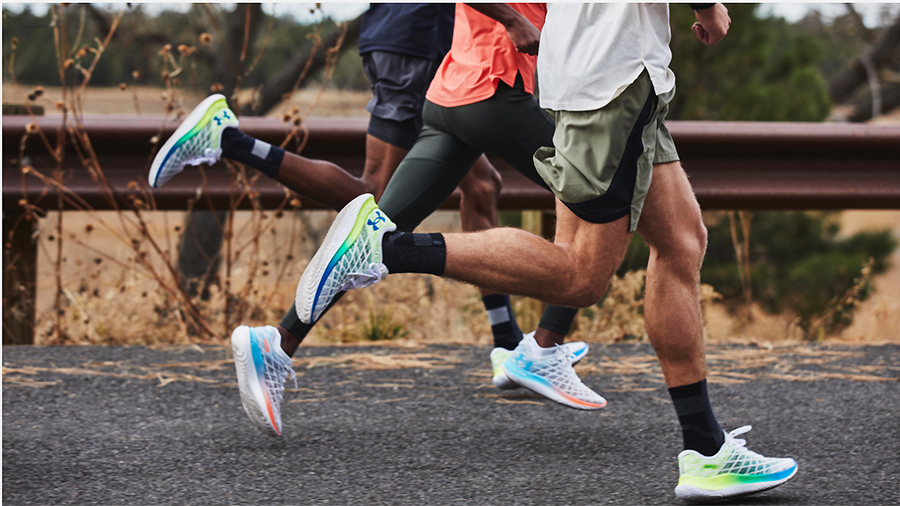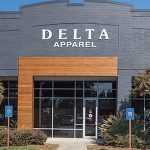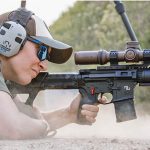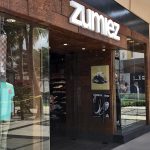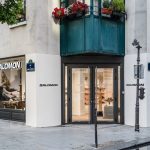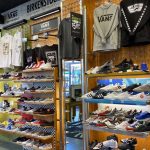This past holiday quarter was one of the rare periods that saw companies talking more about supply than demand on analyst calls. Most vendors in the active lifestyle space were able to navigate closed factories, port congestion and other logistic turbulence to deliver better-than-expected performances but many warned of continued pressure at least through the first half of 2022. Insights from Nike, Adidas, Columbia Sportswear, VF Corp., Callaway Golf, Crocs, and others are rounded up in today’s post
Nike reported third-quarter earnings that topped Wall Street expectations as it navigated supply chain pressures to deliver better-than-expected performances in North America and the EMEA region. In September, the company reduced its growth outlook for the current fiscal year ended May 31 due to COVID-19-driven port congestion and factory shutdowns in Vietnam.
CFO Matt Friend said on a March 21 call with analysts that all factories in Vietnam are operational with total footwear and apparel production in line with pre-closure volumes and its forward-looking demand plans.
“Nearly all of our supplier base is operational without restrictions, and we are working closely with our partners around the world to navigate through the most recent risks related to COVID. Inventory supply in our geographies is beginning to improve from here,” said Friend. “Transit times, however, remain elevated. And in the case of North America, transit times in the third quarter have worsened. We have taken numerous actions to address these challenges, and in many cases, to protect against lead times increasing even further. Despite these ongoing challenges, we have been able to mitigate our transit delay impact by nearly four weeks versus industry averages.”
…
Adidas said on its March 9 fourth-quarter call that revenues in North America were most impacted by the supply shortages with almost half of the total negative impact recorded in the region. As a result, currency-neutral revenues in North America declined 3.7 percent during the fourth quarter.
In releasing third-quarter results last November, Adidas had warned that pandemic-related factory closures in Vietnam and supply chain bottlenecks would impact its overall top-line growth by €1 billion ($1.2 billion) over the next two quarters. The negative impact on sales is expected to amount to €400 million in the fourth quarter and €600 million in the first quarter.
Illustrating the ongoing challenges from port congestion, Adidas noted that of the inventories in North America at year-end, 49 percent represented goods on hand while 51 percent represented goods in transit. At the same time a year ago, 71 percent of Adidas’ overall inventory balance represented goods on hand versus 29 percent representing goods in transit.
The North American region will again be impacted by inventory shortages in the first quarter but no significant supply-chain impact is expected beginning in the second quarter.
Kasper Rorsted, Adidas’ CEO, said demand for the Adidas brand from a consumer standpoint in North America remains healthy despite concerns ranging from the war in Ukraine, the pandemic and inflation. Rorsted said, “Demand has been out outweighing the supply.”
…
Crocs delivered stellar results for the fourth quarter and year ended December 31 but warned that $40 million of orders would shift from the first into the second quarter of the current year due to pandemic-related transit delays.
Crocs had warned at the 2022 ICR Investor Conference in mid-January that the factory shutdowns in Vietnam last year, combined with the continued extended transit times, would impact supply and new product introductions for the first half of 2022.
On a conference call with analysts, Andrew Rees, Crocs’ CEO on a conference call on February 16, said the shift in orders has the biggest impact in the EMEA region. He said the primary supply chain hurdle is transit disruptions.
“The factories are back up and running,” said Rees. “They have been for some time, and we’re relatively pleased with their ramp up post-Chinese New Year. They’ve come back up to speed quickly. The delays that we see from Q1 into Q2 are transportation-related. And I would say it’s a combination of delays in loading, delays in transit and delays unloading. So that was a longer delay than we expected.”
He added, “As we look at our overall business, I think we’re confident in the amount of supply that we have and the ability to grow our supply base to meet our overall annual guidance. And it’s really due to transportation delays that continue to move around.”
Rees added that Crocs had not experienced cancellations due to the late shipments. He added, “The majority of retail partners have been incredibly understanding. I think they’re seeing this from lots of people right now, and we would not anticipate cancellations at this time.”
…
VF Corp.’s third-quarter earnings topped analyst targets, with The North Face accelerating momentum during the critical holiday quarter and the company overall citing progress in rebuilding their wholesale partner’s inventory levels. VF trimmed its sales outlook due to a deteriorating performance by Vans.
Inventories were up 20 percent compared with the same period last year.
Matt Puckett, EVP and CFO, said on the January-28 call that VF continues to diversify its supply footprint and is making earlier commitments on raw material and inventory purchases to optimize supply moving forward. He said, “The logistics network remains under pressure as our teams continue to face unprecedented port congestion, labor shortages and equipment constraints. We expect these logistics challenges will remain with us throughout most, if not all of 2022. However, we’re taking active measures to mitigate the impact, leveraging our relationships to secure additional capacity and equipment, utilizing more ports and more carriers, and even chartering full-size jetliners when economical.”
…
Wolverine Worldwide said Merrell lost at least $50 million in sales in the fourth quarter due to the fallout from the Vietnam factory closures and supply chain challenges are expected to continue to limit growth for Merrell and Saucony in the early part of 2022. However, actions taken to improve supply capacity are set to drive 15 percent to 18 percent overall growth in 2022.
Brendan Hoffman, CEO, said on a February 3 call about the fourth quarter, “Inventory constraints created by Vietnam factory closures and the ongoing supply chain challenges impacted our top-line growth with demand for Merrell, Saucony and other brands left unmet.”
To reinforce its supply chain, Mike Stornant, EVP and CFO, said Wolverine has secured 40 percent more production capacity and committed to early production on core inventory. Production orders placed and confirmed for 2022 are up over 75 percent compared to the same point in time last year. The forward coverage position on core inventory is expected to increase sequentially each quarter to help offset any further supply chain volatility. Overall, Wolverine expects to invest $220 million in working capital during 2022 to support demand across brands.
Inventory closed the quarter ahead 50 percent or 30 percent excluding Sweaty Betty. Stornant said the company’s available inventory position continued to improve and sequential improvement is expected each quarter in 2022
“Our global order demand for 2022 remains very high and is expected to continue to exceed the availability of inventory in the very near term,” said Stornant. “This strong demand is true for all brands in the portfolio as we continue to benefit from relevant consumer and category trends in footwear and apparel. Thankfully, we believe the actions taken last year to improve our supply capacity and inventory position should allow us to service the increased demand at a higher level in 2022.”
…
Skechers USA saw both sales and earnings easily surpass Wall Street targets as the company navigated supply chain congestion to meet robust demand for its comfort footwear. On an analyst call on February 3, David Weinberg, COO, said the supply chain situation finally appears to be improving.
“We saw improvements in December with more goods moving through our distribution centers than in the previous months,” said Weinberg. “The improvement continued through January as port congestions eased and more containers reached our distribution center. However, we believe these challenges will remain through the first half of 2022. But we are optimistic they will ebb in the latter half of the year.”
Total inventory was $1.47 billion at the quarter’s end, an increase of 44.7 percent from December 31, 2020. Increased inventory levels primarily reflect higher merchandise in transit due to supply chain challenges with shipping and port delays.
…
Under Armour’s fourth-quarter earnings and sales topped Wall Street estimates as demand continues to improve, led by North America. However, officials warned on an analyst call that supply chain headwinds tied to the pandemic, including heightened freight costs and stalled deliveries, would weigh on further progress for the next several quarters.
On the call on February 11, David Bergman, CFO, said the COVID-19-related supply chain pressures, including longer than usual transit times, port congestion and associated freight and logistics costs, are expected to continue at least through the first half of fiscal 2023 before easing in the back half.
“It is definitely not a demanding challenge as we think about this transition quarter or even going into the beginning of fiscal 23,” said Bergman. “It is a supply challenge with the COVID impacts, and so that’s a position that we’re excited to be in and really challenge our supply chain team to be able to continue to deliver for us.”
For the current quarter ended March 31, Under Armour provided an updated outlook for its quarter ended March 31 that placed sales above prior guidance but earnings guidance below analyst targets. The quarter’s expectation includes approximately 10 percentage points of headwinds related to reductions in its spring-summer 2022 order book due to supply constraints.
…
On Holdings circumvented supply chain challenges to deliver fourth-quarter results that easily surpassed Wall Street targets. The Swiss running brand also lifted its outlook for 2022, projecting sales to expand at least 37 percent on top of 2021’s 70.4 percent gain.
Martin Hoffmann, co-CEO and CFO, said on a March-18 call that production capacity in Vietnam was back at 100 percent of pre-lockdown commitments since December 2021. With encouraging order backlog, the improved supply chain situation drove the higher outlook for 2022. He said, “Overall, we are fast-tracking the capacity ramp-up plan this year and leveraging our close relationship with all factory partners; this includes expanding into Indonesia, where we started production in a new facility to diversify our production network.”
…
Columbia Sportswear exceeded its fourth-quarter outlook, primarily driven by its direct-to-consumer (DTC) brick-and-mortar and e-commerce businesses even as wholesale shipments fell short of expectations.
“Even as consumers return to in-store shopping, this holiday season our e-commerce sales continued to grow rapidly,” shared Tim Boyle, Columbia’s chairman, president and CEO on a February 3 call. “In our wholesale business, Fall 2021 sell-through rates were exceptional. Despite our best efforts to deliver products to our retail partners, wholesale sales were constrained by supply chain disruptions.”
Despite the supply chain constraints, 2021 sell-through exceeded expectations and retailers exited the fall/winter season with minimal carryover inventory.
Columbia is investing to enhance its supply chain capabilities to expand distribution capacity, improve inventory management, and adapt to shifts in its sales mix.
The 2022 outlook calls for 16 percent to 18 percent year-over-year sales growth. Boyle said, “I’d note that wholesale orders for our 2022 product line support even stronger growth, and we are purchasing inventory to meet this higher demand. We are calibrating the forecast we are giving you today to reflect ongoing supply chain bottlenecks, which are anticipated to continue. To the extent we can mitigate these supply chain constraints, we see potential upside to our financial outlook.”
…
Yeti reported sales and profits in the fourth quarter that surpassed analyst targets on demand for both its drinkware and coolers while predicting another year of strong growth in 2022. However, management cautioned that supply chain pressures would impact sales in the first part of the year. Gross margins are also expected to be weighed down by higher heightened supply chain costs.
“Overall, we believe this performance reflects what would be considered a tremendous growth story in any environment, let alone one that has included two years of a pandemic, pervasive supply chain disruption and the emergence of significant cost pressure,” said Matt Reintjes, president and CEO, on a February 17 call.
Reintjes said Yeti’s confidence going into its fifth year as a public company is reflected in its preliminary 2022 sales outlook that calls for 18 percent to 20 percent growth, ahead of the initial outlook provided at the start of 2021.
However, Yeti noted that growth would be weighted toward the back half of the year due to supply chain challenges. Reintjes also noted that Yeti has been taking actions to offset the “significant” cost pressures that emerged throughout 2021, particularly in transportation, duties and raw materials. He noted that as discussed previously, Yeti recently implemented strategic price increases designed to absorb some of the cost pressures. In addition, Yeti is actively managing spending with the goal of continuing to maintain an adjusted operating margin of approximately 20 percent.
Said Reintjes, “While it would be difficult to predict how some of these headwinds will evolve through the year, we believe we have taken a prudent approach regarding the potential impact on our results.”
…
Callaway Golf’s Golf Equipment segment was down year over year due to third-quarter supply chain disruptions and a shift to prioritizing 2022 new launch inventory over fourth quarter 2021 sales. The segment also launched several new products in Q4 2020, thus creating an uneven year-over-year comparison.
Chip Brewer, president and CEO, said on a February 10 call supply chain pressures are easing, but expected to continue throughout the year. Brewer said, “Everybody should buy your ops person’s lunch at some point this year because they are definitely playing whack-a-mole as they’re dealing with one issue after the next. If it’s not a labor shutdown, it’s a supply shortage, whether it’s semiconductors or a chemical needed for your urethane covers or the logistics challenges of getting containers or getting through a terminal somewhere, and the teams continually work through that.
“But the supply chain is continually improving. We’ve been ramping up capacity there. You don’t always see that because it’s being offset by some of these challenges from time to time. But through focusing on the Golf Equipment side, Vietnam is operating well right now, China is just coming back from Chinese New Year.
“The return of employees is always an interesting question and it’s returning well. We’re not going to be completely out of the woods on the supply chain, but we’ve shown we’re going to be able to manage it very well. And at present, we’re very confident on the supply chain side.”
…
Deckers Brands, the parent of Ugg and Hoka One One, on its February 3 analyst call pointed to execution on their long-term strategy, including driving Hoka growth, diversifying Ugg into a year-round brand, building direct-to-consumer (DTC), and developing the international market as drivers for a strong fiscal third-quarter performance that outpaced Wall Street expectations. While the top-line results aligned with analysts’ expectations for the quarter ended December 31, 2021, the company easily outpaced bottom-line estimates as DECK shrugged off the effects of supply chain issues.
Inventory was $551 million, up 80 percent from $305 million at the same time in the prior year, with the large majority of that increase still in transit and delayed due to port congestion.
“The most material challenge facing our business continues to be prolonged transit times for items produced overseas to reach our warehouses,” CFO Steve Fasching shared on the call. “This has led to a much higher proportion of inventory classified as in-transit. At September quarter-end, we noted that approximately 45 percent of inventory was in-transit, compared to roughly 20 percent in the prior year at the same point in time. As of December 31, we have not seen improvement as approximately 50 percent of our inventory remained in transit, which compares to roughly 25 percent in the prior year at 12/31. We do not expect this issue to be resolved near term. And as a result, we plan to carry elevated levels of inventory at fiscal 2022 year-end and into fiscal year 2023, placing emphasis on receiving product into the country of sale at the expense of inventory efficiencies in the short term. We will continue to utilize airfreight where strategically necessary to import products and leapfrog port congestion to maintain share.”
…
Vista Outdoor delivered its sixth consecutive quarter of record-breaking financial results, elevated by a continuing surge in ammunition demand and healthy double-digit gains across its Outdoor Recreation and Action Sports brands. The company again raised its fiscal year 2022 guidance.
Chris Metz, CEO, said on a February 3 conference call with analysts said the strong profitability reflected the successful navigation of supply chain and inflationary challenges. He said, “Our supply chain center of excellence is focused on enabling our brands to leverage shared resources and perform at higher levels than they could on their own, similar to our e-commerce center of excellence. Driven by the efforts of our supply chain team, our brands have dramatically improved their performance over the past 3 years in areas including procurement, tariffs, hedging, SKU rationalization, and freight optimization. This has resulted in significant efficiencies and improved ROI for our overall company. Given the current issues related to supply chain and logistics that our industry is facing, it’s been challenging to make products fast enough to meet the high demand we’re experiencing.
“However, as a result of our supply chain center of excellence, we’ve been successful in getting more products, including innovative new products, manufactured and delivered from overseas on a timely basis. At the same time, driven by our brand leadership, we’ve maintained the pricing power to sustain our profitability despite the pressures associated with higher commodity, supply chain and SG&A costs.”
…
Clarus Corp., boosted by strength at Black Diamond and its ammunition businesses, delivered another record quarter to close out its record-setting year of sales and earnings despite supply chain challenges.
John Walbrecht, President and CEO, said, “We continue to be nimble and decisive at the brand level, which is critical in achieving this level of performance.”
Inventory levels closed the quarter at $129.4 million, up 9 percent from the end of the third quarter and ahead 89.2 percent year over year. The amount includes $27 million of incremental Rhino-Rack and MaxTrax inventory and incremental inventory investments of roughly $34 million across brands to mitigate supply chain constraints. CFO Mike Yates said, “We believe that our 2021 results through this strategy have been working.”
Photo courtesy Under Armour
.

